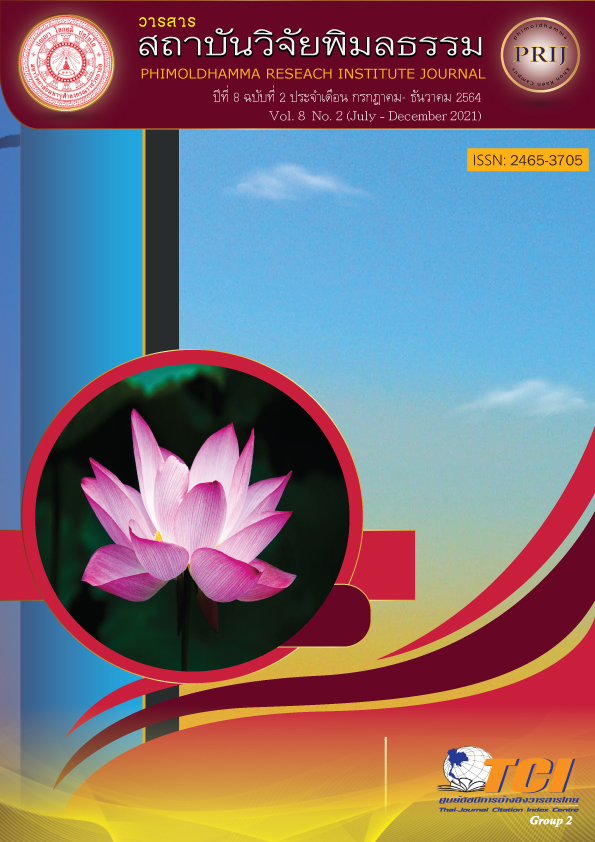Buddhist Design Thinking Process: Tools for Getting out of Suffering and Stress in the New Normal era of People in the Organization
Keywords:
Buddhist method, Thinking Process, Stress, BuddhismAbstract
The analysis of Most of human suffering and stress are caused by thoughts. Because after having a problem or a bad story, it will be taken into account. And if the thoughts are badly managed, they can lead to suffering. The Covid-19 epidemic situation has made everyone stressful. Including people of working age, there are many problems. At present, there is one thought process that is used to solve problems in the right spot. as well as developing new ideas to fix the problem set in order to find the best and most suitable way this is called Design Thinking with the objective of creating tangible future results. in order to answer and solve problems effectively including new innovations that is useful as well because in this era is the era of design or design, even the idea is not just the invention of creating new things. To come out as a tangible object but can design then it can be integrated with the Buddhist way of thinking, thereby increasing the choice in solving stress for people of working age in this New Normal. Buddhist design thinking process Consequently, it consists of: 1. Think find reasons (Kanamonasikan) to understand the problem (Empathize). 2. The Noble Truth of thinking. To define the problem clearly (Define)-Identify the problem and the framework of the problem or multiple aspects (primary) to brainstorm (Ideate) 4. Create a selected prototype (Prototype) 5. Test (Test).
References
กรมสุขภาพจิต. (2563). รายงานอัตราการฆ่าตัวตาย (รายต่อแสนประชากร) ปี พ.ศ. 2540-2563. เข้าถึงได้จาก https://www.dmh.go.th/report/suicide/stat_prov.asp
พระธรรมปิฎก (ป.อ.ปยุตฺโต). (2543). พุทธธรรม ฉบับปรับปรุงและขยายความ. (พิมพ์ครั้งที่ 9). กรุงเทพฯ: มหาจุฬาลงกรณราชวิทยาลัย.
มหาจุฬาลงกรณราชวิทยาลัย. (2560). พระไตรปิฎกฉบับภาษาไทย ฉบับมหาจุฬาลงกรณราชวิทยาลัย. กรุงเทพฯ: มหาจุฬาลงกรณราชวิทยาลัย.
Merholz, P. (1960). Why Design Thinking Won’t Save You. Harvard Business Review Blog Network.
Pressman, A. (1960). Design Thinking A Guide to Creative Problem Solving for Everyone. London: Routledge.
Ulla Johansson-Sköldberg, Jill Woodilla, and Mehaves Çetinkaya, (2013). Design Thinking: Past. Present and Possible Futures, 22(2), 121-144.






